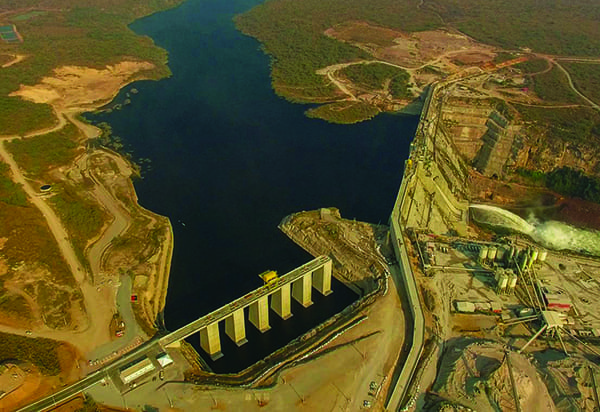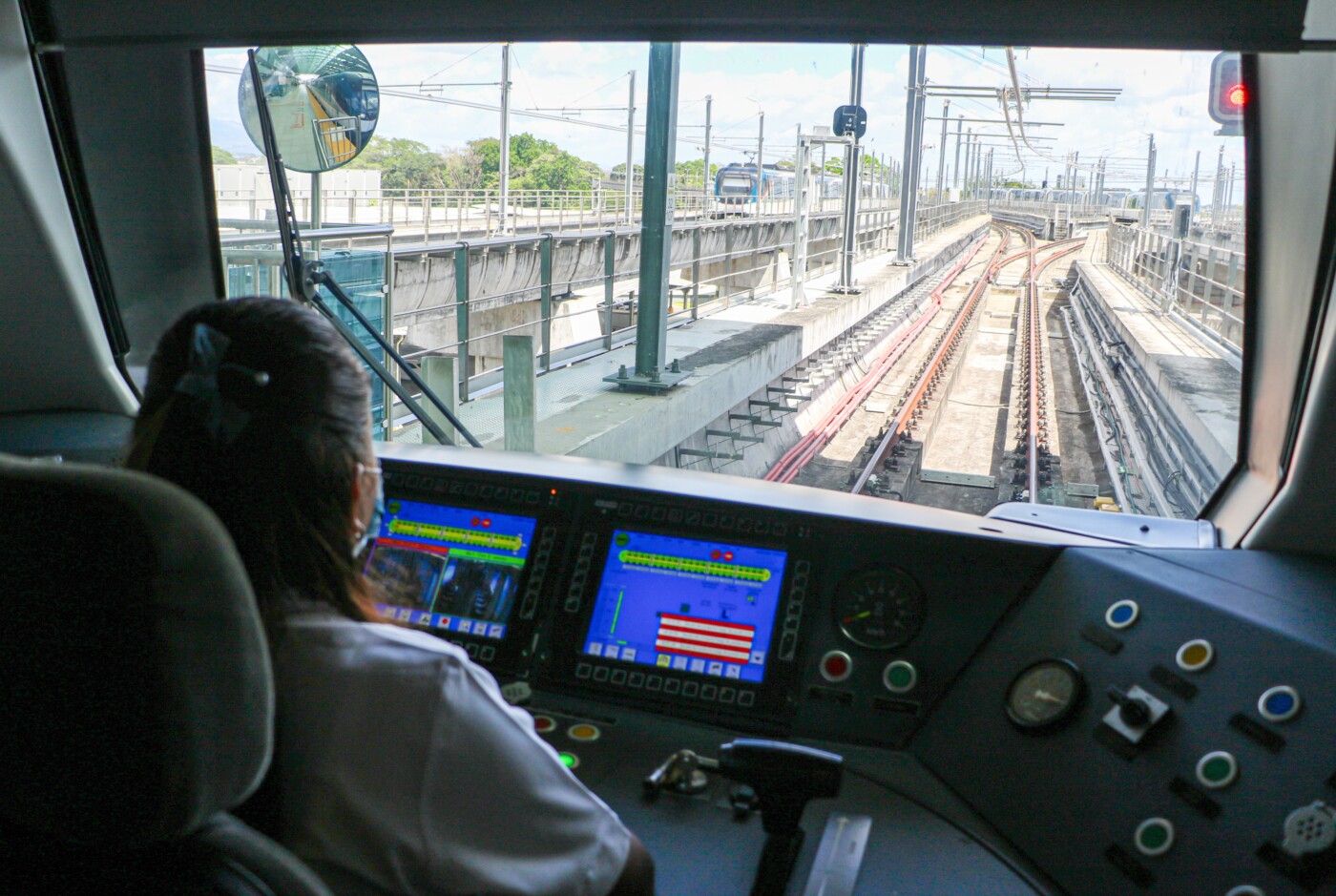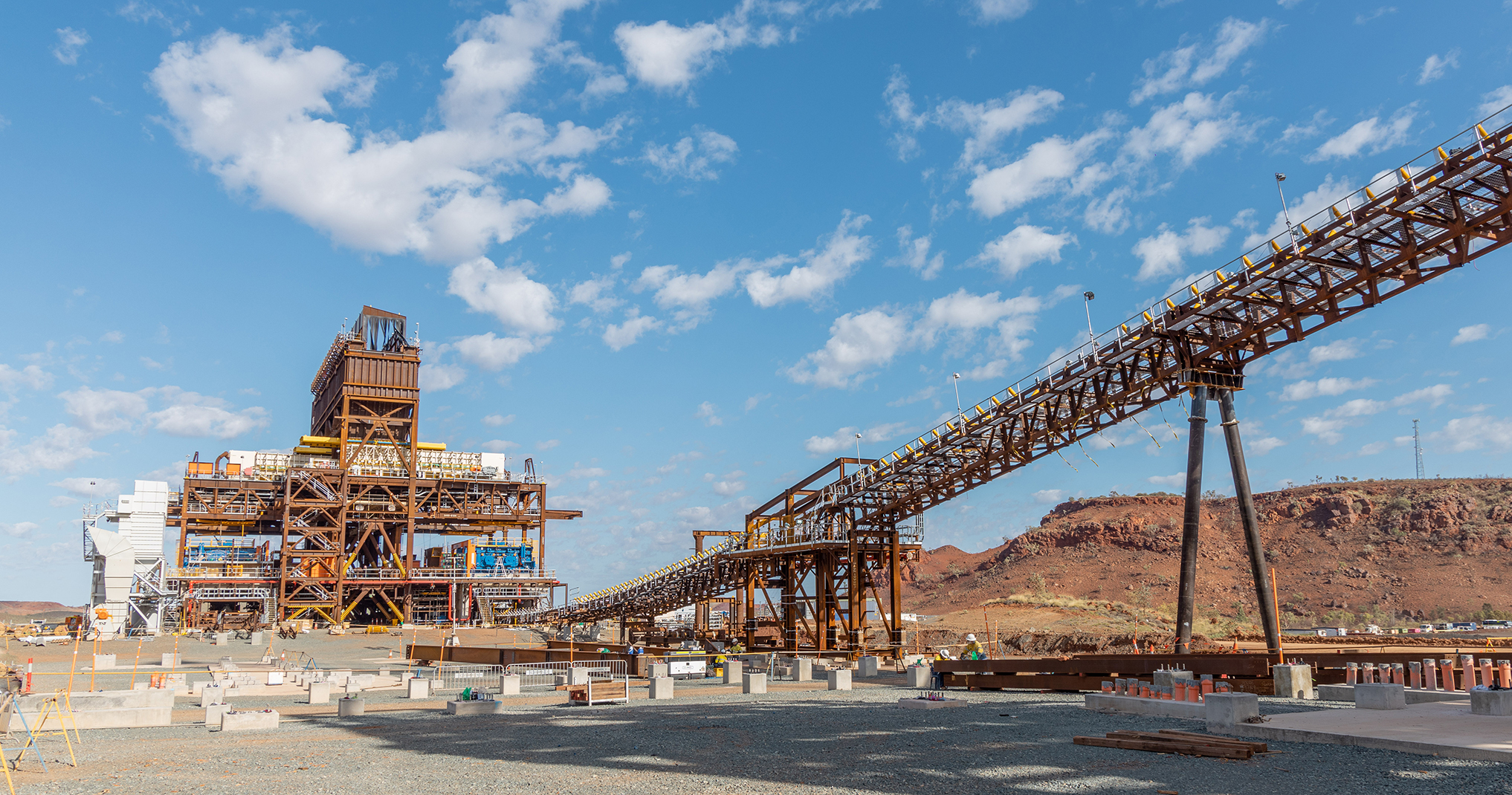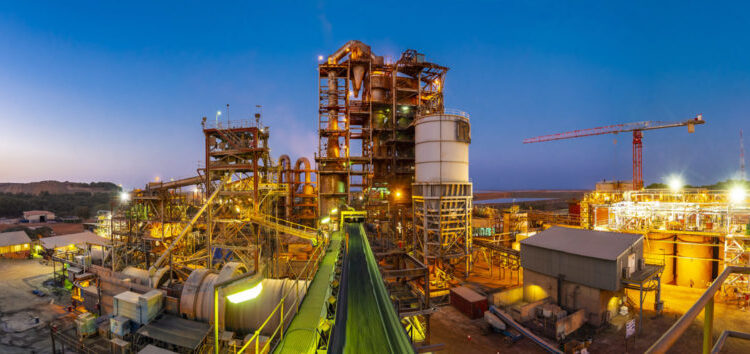
The potential of constant electricity supply to catalyze development across West Africa cannot be overstated. With a population exceeding 400 million, the region grapples with persistent power shortages that stifle economic growth, limit educational opportunities, and constrain healthcare services. However, there is hope on the horizon. By examining the transformative effects of reliable electricity in other parts of the world and exploring a strategic power mix suitable for West Africa, we can chart a path from power scarcity to prosperity.
The Power of Electricity in Development
Electricity is a cornerstone of modern development. The experiences of countries in other regions vividly illustrate this. For instance, in Southeast Asia, Vietnam's electrification programs in the late 20th century revolutionized its economy. The nation's electrification rate skyrocketed from around 50% in 1995 to nearly 100% by 2010. This surge in electricity availability powered industrial growth, improved healthcare outcomes, and enhanced educational access, ultimately lifting millions out of poverty.
Similarly, in South Asia, India has made significant strides in rural electrification over the past two decades. The Pradhan Mantri Sahaj Bijli Har Ghar Yojana (Saubhagya) scheme, launched in 2017, aimed to provide electricity to all households. The results have been profound: rural areas have seen increases in agricultural productivity, local businesses have flourished, and children's educational performance has improved due to better lighting and access to technology.
These examples underscore the transformative potential of reliable electricity. For West Africa, embracing a comprehensive and sustainable approach to power generation could unlock similar benefits, propelling the region toward unprecedented socio-economic development.
The Current State of Electricity in West Africa
West Africa's electricity sector faces significant challenges. Despite its vast resources, the region has one of the lowest electricity access rates in the world. According to the International Energy Agency (IEA), approximately 45% of the population in West Africa lacks access to electricity. The situation is particularly dire in rural areas, where access rates drop to below 20%.
The existing power infrastructure is often outdated and inefficient, leading to frequent blackouts and power outages. Additionally, the high cost of electricity generation and distribution, coupled with insufficient investment in the sector, exacerbates the problem. However, the region's abundant natural resources present a unique opportunity to develop a diverse and sustainable energy mix.
A Strategic Power Mix for West Africa
Designing an optimal power mix for West Africa involves considering factors such as cost, weather conditions, human capacity, and long-term sustainability. The region is endowed with diverse energy resources that, if harnessed effectively, can create a balanced and resilient energy system.
Solar Power
West Africa boasts abundant sunshine, making solar energy a highly viable option. Photovoltaic (PV) systems can be deployed in both urban and rural areas, providing decentralized power solutions that are particularly beneficial for remote communities. The decreasing cost of solar panels and advancements in battery storage technology enhance the feasibility of solar power as a cornerstone of the region's energy mix.
Countries like Burkina Faso and Mali are already making strides in solar energy. For instance, the Zagtouli Solar Power Station in Burkina Faso, with a capacity of 33 MW, is one of the largest in the region. Similarly, Mali's Segou Solar PV Project aims to add 33 MW to the national grid, enhancing energy security and reducing reliance on imported fuels.
Northern Nigeria's high solar irradiance, averaging 5.5 to 7 kWh/m²/day, and vast arid land make it ideal for large-scale photovoltaic (PV) and concentrated solar power (CSP) installations. Advanced PV technologies and battery energy storage systems (BESS) can enhance grid reliability and energy access, particularly in remote areas. Investing in solar infrastructure can reduce reliance on diesel generators, lower operational costs, and cut greenhouse gas emissions, positioning Northern Nigeria as a renewable energy leader in West Africa.
Hydropower
With major rivers such as the Niger, Senegal, and Volta, West Africa has significant hydropower potential. Small to medium-scale hydropower projects can provide consistent and renewable electricity, contributing to the stability of the power grid. These projects can also support irrigation and water supply initiatives, further boosting agricultural productivity.
Côte d'Ivoire is investing in expanding its hydropower capacity with projects like the Soubré Dam, which adds 275 MW to the national grid. These hydropower plants are crucial for providing stable and renewable electricity, supporting both domestic consumption and exports to neighboring countries.
Wind Power
Certain areas along the West African coast and in the Sahel region possess favorable wind conditions for power generation. Wind farms can complement solar and hydropower, especially during periods when solar generation is low. Integrating wind energy into the grid can enhance energy security and reduce reliance on fossil fuels.
The Lake Turkana Wind Power Project in Kenya, though not in West Africa, serves as an excellent example of how wind energy can transform a region's power landscape. The project, the largest wind farm in Africa, has a capacity of 310 MW and supplies a significant portion of Kenya's electricity needs. West Africa can draw lessons from such projects to develop its wind energy potential.
Natural Gas
While renewable energy should be prioritized, natural gas can serve as a transitional energy source. West Africa has substantial natural gas reserves, particularly in Nigeria. Developing gas-fired power plants can provide a reliable and relatively cleaner alternative to coal and oil, supporting grid stability as renewable capacity is scaled up.
The Nigeria-Morocco Gas Pipeline project, currently in the planning phase, seeks to transport Nigerian natural gas along the West African coast to Morocco and Europe. This pipeline will not only provide a stable supply of natural gas for power generation but also foster regional energy integration and economic cooperation.
Biomass
Agricultural residues and organic waste present opportunities for biomass energy. By converting waste into electricity, biomass plants can reduce environmental pollution and provide an additional revenue stream for farmers. This approach aligns with sustainable development goals by promoting a circular economy.
In Ghana, the Kpong Farms Biogas Project is an example of how biomass can be harnessed effectively. The project uses agricultural waste to produce biogas, which is then used for electricity generation, reducing dependence on traditional biomass fuels and improving air quality.
Ongoing Power Projects in West Africa
Several ambitious projects are underway across West Africa, aiming to enhance electricity access and reliability.
West African Power Pool (WAPP)
The West African Power Pool (WAPP) is a cooperative initiative among ECOWAS member states to integrate national power systems into a unified regional electricity market. WAPP aims to ensure reliable and affordable electricity supply across the region by leveraging cross-border energy resources. Projects under WAPP include the construction of high-voltage transmission lines and interconnections, such as the North Core Project linking Nigeria, Niger, Benin, and Burkina Faso.
The WAPP is also working on the Côte d'Ivoire, Liberia, Sierra Leone, and Guinea (CLSG) Interconnection Project, which aims to establish a robust transmission network connecting these countries. This project will facilitate electricity trade and improve grid stability across the region.
Nigeria-Morocco Gas Pipeline
The Nigeria-Morocco Gas Pipeline project, currently in the planning phase, seeks to transport Nigerian natural gas along the West African coast to Morocco and Europe. This pipeline will not only provide a stable supply of natural gas for power generation but also foster regional energy integration and economic cooperation.
Solar Projects in Burkina Faso and Mali
Several large-scale solar projects are being developed in Burkina Faso and Mali. For instance, the Zagtouli Solar Power Station in Burkina Faso, with a capacity of 33 MW, is one of the largest in the region. In Mali, the Segou Solar PV Project aims to add 33 MW to the national grid, enhancing energy security and reducing reliance on imported fuels.
Côte d'Ivoire Hydropower Expansion
Côte d'Ivoire is investing in expanding its hydropower capacity with projects like the Soubré Dam, which adds 275 MW to the national grid. These hydropower plants are crucial for providing stable and renewable electricity, supporting both domestic consumption and exports to neighboring countries.
Ghana's Energy Initiatives
Ghana is actively pursuing various energy projects to diversify its power mix. The country has invested in the development of renewable energy sources, including solar, wind, and biomass. The Nzema Solar Power Plant, with a planned capacity of 155 MW, is set to become one of the largest solar installations in Africa. Additionally, Ghana is exploring offshore wind potential along its coast.
Senegal's Renewable Energy Push
Senegal is also making significant strides in renewable energy. The country has inaugurated several solar power plants, including the 30 MW Senergy 2 plant and the 20 MW Ten Merina plant. Furthermore, the Taiba N'Diaye Wind Farm, with a capacity of 158.7 MW, is the largest wind project in West Africa and plays a crucial role in Senegal's energy strategy.
Opportunities for Internal and External Stakeholders
Internal Stakeholders
For internal stakeholders, the electrification of West Africa presents numerous opportunities. Local governments can benefit from increased economic activity and tax revenues as industries grow and prosper. Rural communities, in particular, stand to gain significantly from improved access to electricity, which can enhance education, healthcare, and overall quality of life. Local businesses can thrive with reliable power, leading to job creation and economic stability.
Educational institutions can leverage better electricity access to enhance learning environments and integrate technology into classrooms, thereby improving educational outcomes. Healthcare facilities can operate more effectively with reliable power, ensuring that medical equipment functions optimally and that cold chains for vaccines and medicines are maintained.
External Stakeholders
For external stakeholders, including international investors, development agencies, and technology providers, West Africa's power sector offers substantial investment opportunities. Infrastructure projects such as solar farms, wind parks, and hydroelectric plants require significant capital investment, creating opportunities for financial institutions and investors looking to support sustainable development.
Technology providers and engineering firms can contribute to the design, construction, and maintenance of new power infrastructure, fostering long-term partnerships and technology transfers. Development agencies and non-governmental organizations (NGOs) can play a pivotal role in capacity building and community engagement, ensuring that local populations are actively involved and benefit from these projects.
Impact on Key Industries and Quality of Life
Industrial Growth
Reliable electricity supply will directly impact key industries such as manufacturing, agriculture, and services. In manufacturing, consistent power can reduce production costs, increase output, and improve product quality, making West African goods more competitive in global markets. Enhanced agricultural productivity, facilitated by reliable electricity for irrigation and processing, can lead to food security and increased exports.
Information and Communication Technology (ICT)
The ICT sector stands to benefit immensely from improved electricity access. Reliable power is essential for the operation of data centers, telecommunications networks, and internet infrastructure. As electricity becomes more stable, West Africa can experience a digital transformation, fostering innovation, entrepreneurship, and access to global markets.
Healthcare
In healthcare, reliable electricity can ensure the continuous operation of critical medical equipment, improve diagnostic capabilities, and maintain the cold chain for vaccines and medicines. This will enhance the quality of healthcare services, reduce mortality rates, and improve public health outcomes.
Education
Improved electricity access can revolutionize education by enabling the use of digital tools and resources in classrooms. Students can benefit from e-learning platforms, access to online information, and improved study conditions. This can lead to better educational outcomes and increased opportunities for higher education and employment.
Tourism
Regular power supply in West Africa has the potential to revolutionize the tourism sector, leading to a significant boost in visitor experiences and economic contributions. With consistent electricity, hospitality establishments can operate more efficiently and cost-effectively, translating to cheaper operational costs for hotels, restaurants, and tour operators. This, in turn, allows for more competitive pricing and improved services, making West Africa a more attractive destination for travelers. Furthermore, the assurance of reliable power enhances security, both for tourists venturing out late and for businesses operating after hours. This extended operational timeframe enables tourists to explore attractions, dine at local restaurants, and engage in nightlife activities, ultimately extending their stay and spending more in the region.
Moreover, regular power supply opens up a myriad of options for tourists, with a wider range of activities and attractions available. From cultural performances to night markets, guided tours, and outdoor adventures, the tourism landscape becomes more vibrant and diverse. Additionally, the increased availability of electricity facilitates the development of new tourist experiences, such as interactive exhibits, multimedia presentations, and eco-friendly accommodations powered by renewable energy. Overall, regular power supply lays the foundation for a thriving tourism industry in West Africa, driving economic growth, fostering job creation, and showcasing the region's cultural and natural treasures to the world.
Quality of Life
Overall, the quality of life for West African populations will improve significantly with reliable electricity. Households will enjoy better lighting, refrigeration, and access to information and entertainment. Rural areas, in particular, will see a reduction in the time spent on manual tasks, as electrical appliances and equipment become more accessible.
Conclusion
The journey from power scarcity to prosperity in West Africa hinges on strategic investments in a diverse and sustainable energy mix. By harnessing the region's abundant solar, hydropower, wind, natural gas, and biomass resources, West Africa can build a resilient power infrastructure. The ongoing projects and regional cooperation efforts underscore the commitment to achieving universal electricity access. As reliable electricity becomes a reality, the socio-economic transformation across West Africa will pave the way for a brighter and more prosperous future.
The opportunities for internal stakeholders, including local governments, businesses, educational institutions, and healthcare facilities, are immense. External stakeholders, such as international investors, development agencies, and technology providers, can play a crucial role in supporting and benefiting from this transformation. The impact on industries, ranging from manufacturing to ICT, agriculture, healthcare, and education, will be profound, leading to improved quality of life for millions of people.
Ultimately, a reliable electricity supply is not just a matter of convenience; it is a fundamental driver of development and prosperity. By embracing a strategic and sustainable approach to power generation, West Africa can unlock its full potential and achieve lasting socio-economic progress.













